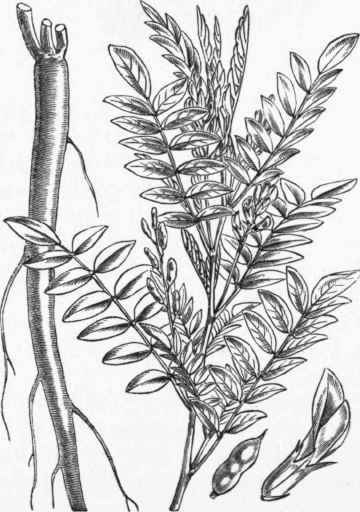Liquorice (Glycyrrhiza Glabra)
Description
This section is from the book "Commercial Gardening Vol4", by John Weathers (the Editor). Also available from Amazon: Commercial Gardening, A Practical & Scientific Treatise For Market Gardeners.
Liquorice (Glycyrrhiza Glabra)
At one time Liquorice (fig. 509) was extensively grown in the Mitcham neighbourhood, but for years past it has not been a crop sufficiently remunerative to encourage development. It is a leguminous plant 3 to 4 ft. high, with somewhat clammy branches and leaflets, and spikes of pale-blue flowers. It likes deeply dug or trenched sandy soil well enriched with decayed manure, and is raised from cuttings of pieces of root-stems having a bud or two. About 3 ft. of space is given to each plant, the ground between the rows being cropped with Cabbages, Lettuces, or other vegetables until the Liquorice fills all the space. Each year the tops are cut down close to the ground, and the soil is dug and manured between the rows. The crop is fit to harvest at the end of the third year, and considerable labour is required to lift the roots which have penetrated the soil very deeply. The usual method is to dig a deep trench alongside the first row, thus exposing the roots, which are then dug out, or pulled out with ropes. The roots may be stored in pits like Beetroots and Carrots until wanted.

Fig. 509. - Liquorice (Glycyrrhiza glabra).
Continue to:


